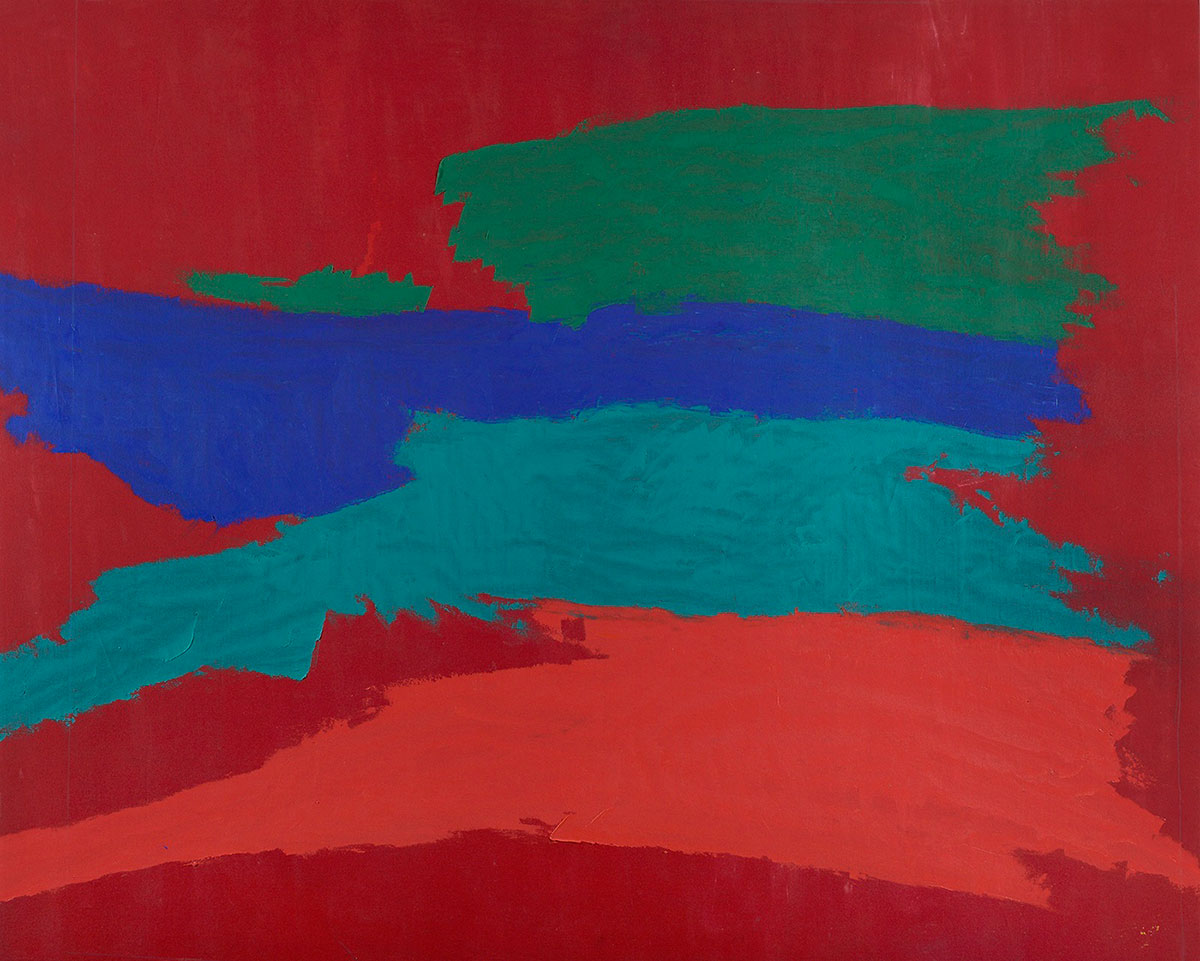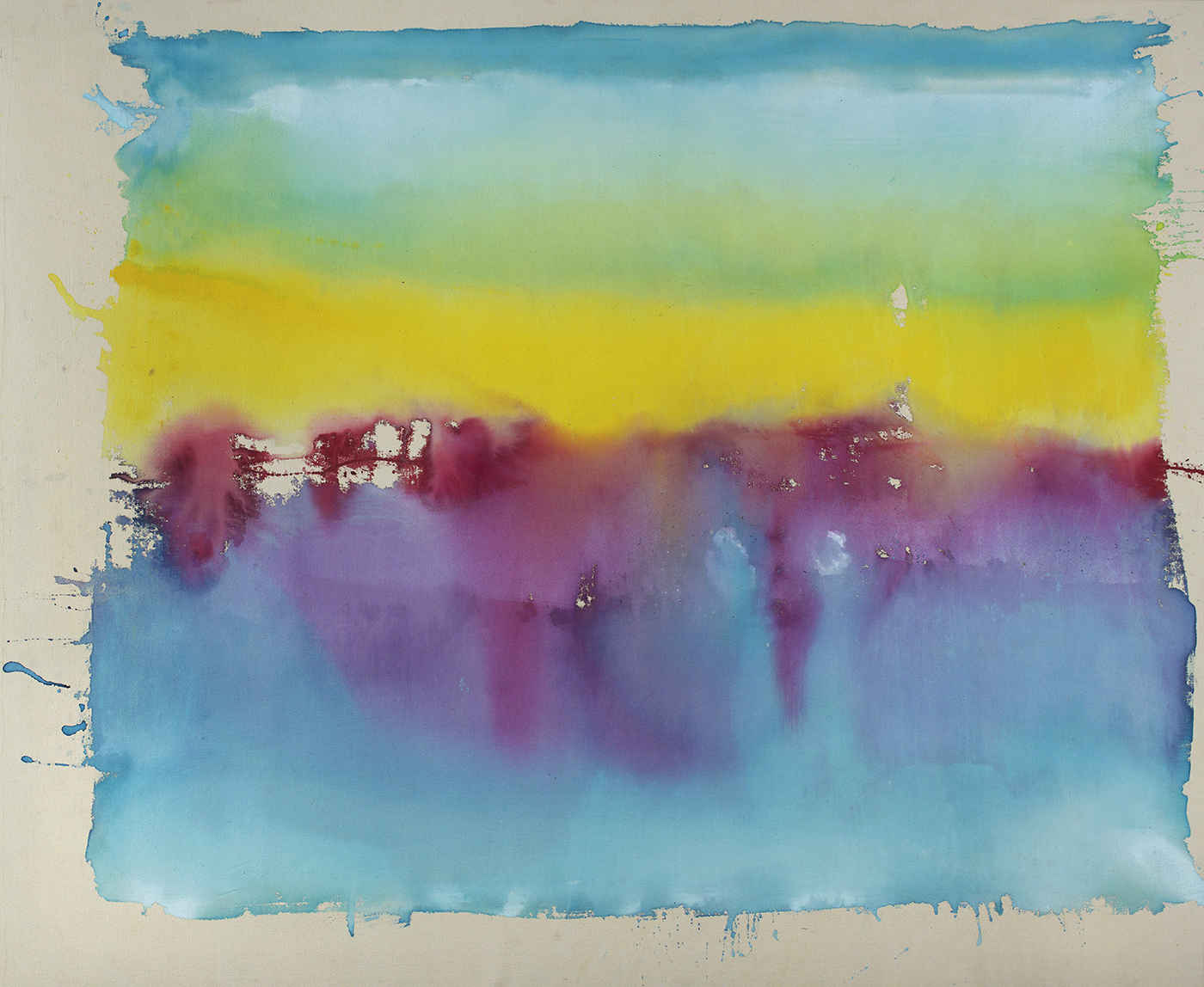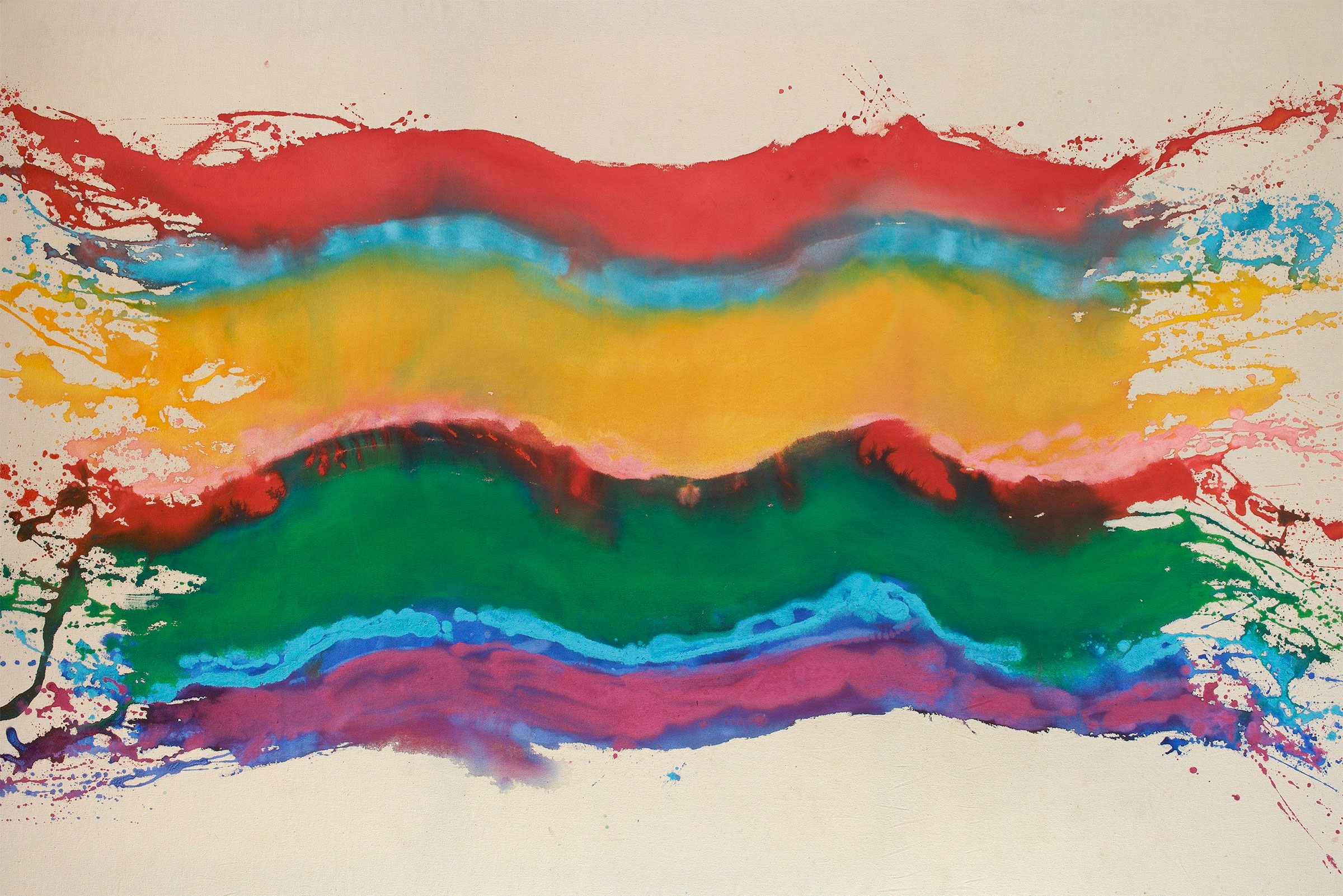Pat Lipsky’s Color Field Paintings From 1969-75

Pat Lipsky identifies with the quote, “Color and I are one, I am a painter” (Paul Klee, 1914 diaries.) Klee was ahead of his time in both his use of color and technique and influenced Lipskys color choices in her stain paintings, and later grid pictures. Gestural abstraction was Lipsky s prevailing mode in the late sixties when she first arrived on the scene.
Using the stain technique she sponged acrylic paint onto raw canvas creating a watercolor effect on a huge scale.
At the edges she often deployed splatters, as if in an homage to lackson Pollock. Lipsky was able to express the personal joy and exuberance of her life at the time with defined ribbons of color that appeared to undulate. Two years into her stain technique the delineations started to blur. Throughout, the raw canvas color as background, or “ground” delivered a “look at me” pop.

Later in the seventies she started putting color next to color in large, precise grid-like pictures, some of which were oriented as diamonds. At the time Lipsky said, “These grid paintings reflect the confinement of living in Manhattan.”
Raised by a painter mother and an engineer father, Lipsky had her first one-woman exhibition in New York at the Andre Emmerich Gallery in 1970. Lipsky’s paintings were placed and sold in other galleries around the United States, often exhibited next to both Helen Frankenthaler and Andy Warhol.
The painter grew up in New York City. She graduated with a BFA from Cornell University in 1963, receiving an MFA from the Graduate Program at Manhattan’s Hunter College, where her mentor was the sculptor and painter Tony Smith.

Her painting at the time coincided with the new movement “Lyrical Abstraction” a term first coined by the collector Larry Aldrich. The 1969 canvas “Spiked Red” (Collection of the Modern Art Museum of Fort Worth, Gift of Mr. and Mrs. Peter Bienstock) demonstrates Lipsky s then approach: close-value reddish and pink hues interspersed with bands of blue, in a wave-like configuration. In the New York Times art critic Hilton Kramer found the painter’s work looked both to the past and the future. “… Miss Lipsky re-introduces the drip, splatter and smear of abstract expressionism…”
Lipsky was invited to participate in the influential 1970-71 exhibition “Lyrical Abstraction” which travelled the country and culminated at New York’s Whitney Museum. The art critic Noel Frackman highlighted Lipskys freshness, and exuberance, finding her style “sustained a mood which celebrates the sheer splendor of color. The edges of these shapes lick out like flames and there is an incendiary vividness in the impetuous yet directed forms… These are mouth-watering paintings.”
By the eighties, Lipsky had expanded her palette to include a wider range of colors — close-value as well as contrasting, now in more delineated forms. “She had begun to explore,” as art critic Katherine Crum later wrote, “a pictorial vocabulary in direct challenge to her roots in Lyrical Abstraction.”

In the 2000s Lipsky continued redefining her image and color, by reincorporating a bold central focalpoint. Writing in the New York Times the art critic Ken Johnson associated these pictures with mechanical forms and music. Noting their “seductive egg-shell surfaces,” Johnson linked them to the painters Frank Stella and Ad Reinhardt. “The effect is polyrhythmic in three dimensions the bands seem to push up and down like valves in a machine enhancing the feeling of Bach-like musicality. The more you gaze at them the more absorbing they become.” From this point on Lipsky began to hone her images and her most recent exhibitions have contained repeating colors in bolder and more simplified forms. In Art in America the painter and art critic Stephen Westfall, called these paintings “her most successful,” finding her “classicism” to be “ultimately idiosyncratic in the best sense.”
Karen Wilkin, reviewing Lipsky’s 2006 exhibition for Art in America discovered in the work a simplicity that served the reverse function—to be ultimately liberating: “Lipsky’s complex, richly allusive counterpoint demands that we pay dose attention to her paintings as paintings… and then reward us by setting free our imaginations.”
In 2018 Lipsky continues to reinvent both her work and herself.
